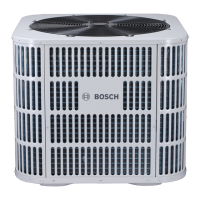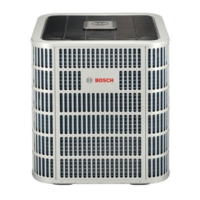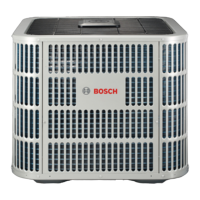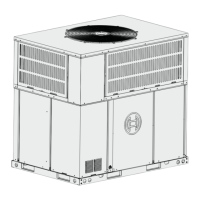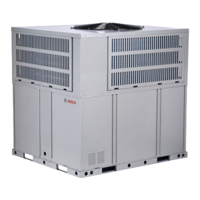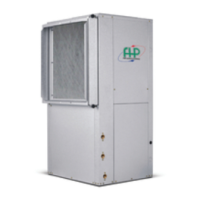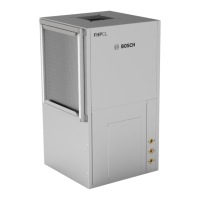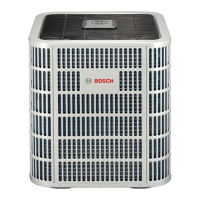Do you have a question about the Bosch IDS BOVA20 and is the answer not in the manual?
Explains warning symbols and keywords like DANGER, WARNING, CAUTION, NOTICE.
Provides warnings about electrical hazards and general installation advice.
Provides dimensions for BOVC-36 and BOVA-60 models in inches.
Details maximum equivalent lengths and vertical separations for refrigerant lines.
Specifies clearance requirements and placement considerations for outdoor units.
Instructions for checking unit for shipping damage and verifying refrigerant charge.
Guidelines for installing the unit on a support pad, including size and levelness.
Lists connection sizes for liquid and suction lines for different models.
Refers to Section 2.2 for determining required line length.
Emphasizes the need for suction line insulation and avoiding metal-to-metal contact.
Precautions for reusing existing refrigerant lines, including checking for leaks and brazing.
Advises on preventing noise transmission and proper installation methods for refrigerant lines.
Details the process of preparing and brazing refrigerant lines for installation.
Describes pressurizing lines with nitrogen and checking for leaks using soapy solution.
Instructions on evacuating the system to a specific micron level.
Steps for safely opening service valves after leak check and evacuation.
Table defining maximum wire lengths based on wire gauge.
Notes on making low voltage connections inside the outdoor unit control board.
Guidance on connecting thermostat wiring, including auxiliary heat.
Specifies matching the high voltage power supply to the equipment nameplate.
Instructions for installing a separate disconnect switch at the outdoor unit.
Requirements for grounding the outdoor unit according to codes.
Step-by-step instructions for starting the system after completing previous sections.
Explains the weigh-in method for charging the system initially or when charge is replaced.
Details subcooling method for charging above 55°F outdoor ambient temperatures.
Describes the variable speed system's control logic and adaptive capacity functions.
Lists various sensors used in the system and their functions.
Explains the function of the PEV in balancing pressure before compressor startup.
Details the Demand Defrost Control (DDC) and conditions for defrost initiation and termination.
Explains the purpose and operation of the compressor crankcase heater.
Describes when the reversing valve energizes and de-energizes.
Outlines various protection functions like coil temperature, ambient temperature, and pressure.
A table listing fault codes, their descriptions, and sensor information.
Explains how to display and interpret system parameters using the check button.
Provides a detailed overview of the main control board components and their functions.
Troubleshooting flowcharts for various error codes like C3, E4, E5, E6.
Safety precautions and guidelines for cleaning the outdoor unit.
Steps for performing a pre-season inspection of the unit.
